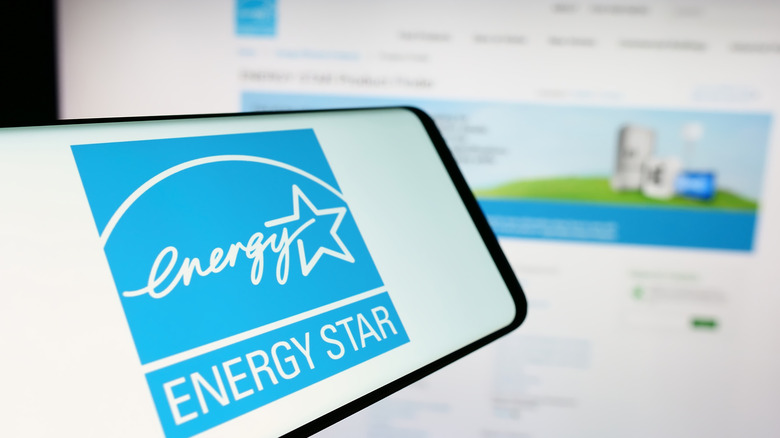What You Need To Look For When Buying Energy Efficient Kitchen Appliances
If you're performing a kitchen remodel, your first task should be replacing old appliances. Yet, there is a benefit to swapping outdated machines for newer models before a complete renovation — if you know what to look for when buying them. You certainly don't want to overlook aesthetics when purchasing new appliances. But perhaps more importantly, you want to be on the lookout for the familiar Energy Star label indicating that the machine is energy-efficient.
An Energy Star tag isn't something just any appliance manufacturer can slap on their wares. The U.S. Environmental Protection Agency sets stringent standards that must be met before a device can receive certification. Any advertised energy savings must be confirmed through testing, and the appliance has to function on par with consumer expectations. And if buying an Energy Star product is more costly than purchasing a model without the label, the energy reduction must equate to utility bill savings, allowing folks to recoup their investment over time.
Besides looking for appliances with the Energy Star logo, it's also worth considering going without certain features that can be more costly. It may be convenient to cool down a beverage by utilizing the ice dispenser that comes with some refrigerators, but that feature uses more energy. The same concept applies to the water dispenser that is typically situated next to it, and both have extra components that can break down, requiring you to spend more on repairs than if you simply went without those minor conveniences.
Energy-efficient appliances are worth the cost
The cost of buying new kitchen appliances often isn't cheap, especially when it comes to your workhorses. Over time, however, it's well worth the investment. Not only do energy-efficient appliances reduce your carbon footprint, but they can also significantly lower your utility costs, saving you some serious dough in the long run.
Take your refrigerator, for example. It never stops working (unless catastrophe strikes). Models that aren't Energy Star certified can gobble up over 1,000 kilowatt-hours per year, whereas those with the energy-efficient logo often use half that amount. That can reduce your utility costs by $30 to $65 a year. Over three to five years, folks generally recover any extra costs associated with buying the more economical model over a less efficient one. Energy-efficient dishwashers offer similar savings. They utilize special sensors that limit the amount of water used, saving people somewhere between $20 and $30 annually and salvaging roughly over 3,800 gallons of water while in operation. Any additional costs accrued from buying an energy-efficient model over a less expensive one will generally be recouped within three years.
If you're trying to save as much as possible when upgrading your old appliances, don't sleep on pre-owned units. It's worth considering how old they are, as kitchen appliances typically last 9 to 20 years (depending on the unit) before they may need to be replaced. Yet, if you find a screaming deal on something that's energy-efficient and only five years old on Facebook Marketplace or a similar third-party seller, snag it before it becomes a lost opportunity to save some cash.

